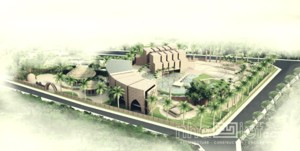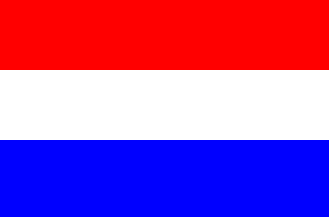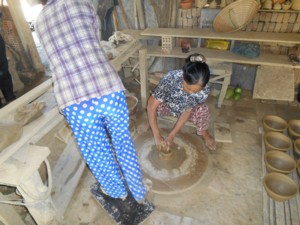- Productie: st Trading Hats
- More about Vietnam
- Redactie: Roby Bellemans
A bit about Việt Nam
The new Terra-Cotta park Thanh Hà
Thanh Hà Thanh Ha, a typical pottery village lies few kilometers from the ancient
town and Unesco World Heritage listed Hoi An. It is not a recreated historical open museum
where actors from 9:00 to 17:00 re-enact how it could have been used. The families who live
there,
have lived there for generations and have passed crafts and arts from father to son or daughter.
Not all habitants become potters ofcourse. Nguyen Van Nguyen, one of the villagers was
trained as
an architect and did good business in HCMC (see NhaViet).He decided to build a museum to offer his native village
more
future opportunities. His aim is to avoid the village to develop unilaterally into a tourist
attraction
where only popular artifacts are to be made. The museum he builds with the help of his family
and
other friends, is abridging the past with the future with all the attention to the wonderful
profession
of potter.
.
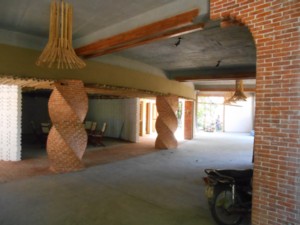 | 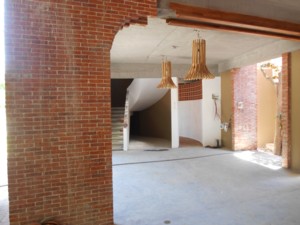 | 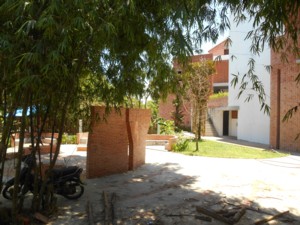 |
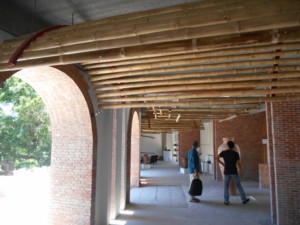 | 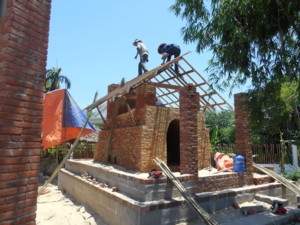 |
The village itself was, according to legend, founded hundreds of years ago when a number of ships from the more northern Thanh Hoa arrived during a violent storm and took shelter in Con Dong, one of 13 Thanh Hô hamlets. The location, at the crossroads of the river and the road to Hoi An, a few miles further, has proven to be a perfect place with plenty of future opportunities. The river clay proved to be excellent for terra cotta products. At that time 400 years ago Hoi An, then called Faifo, was one of the main ports of Vietnam and was visited by ships from all over the World including those of the VOC. .
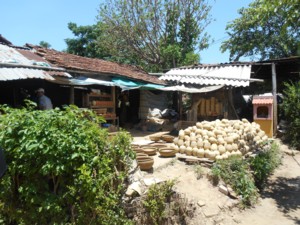 | 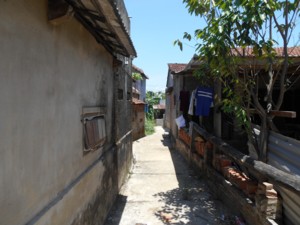 | 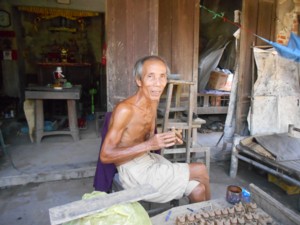 |
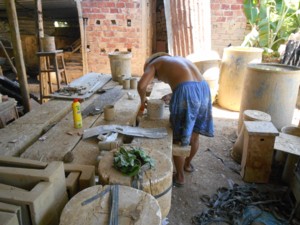 | 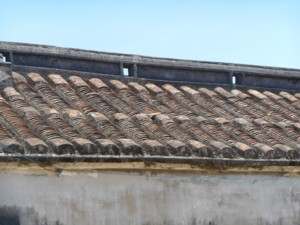 | 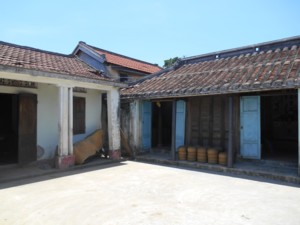 |
The potters settlement in Thanh Ha had excellent patronage in Hoi An. Even the beautiful tiles came from Thanh Ha. These tiles you can view within the village, although due to environmental reasons they may be not be baked any more in the village itself.
Interestingly, one finds very different influences in the produced ceramics. It is a mixture of culture from the North which came together with the stranded sailors and with the old local Sa Huynh culture and subsequently the Champa culture.
The architecture of the museum draws its inspiration from this tradition. Seen from above the pottery the turntable is unmistakably present. The two large buildings are stylized designed in the forms of the two main ovens: the updraft and upface oven. In the museum not only one finds the products of the village but also other terra-cotta centers in Vietnam present themselves in the museum and constantly there are alternating exhibitions. Behind the museum you can find an oven and a working place for visitors, so they can try to handle the clay themselves.
Departing from the museum you will come up in the village where one can see the artisans at work. It is a lovely old, authentic village. Here you can see a short movie that shows how two women perfectly work together in a continuous production process.
